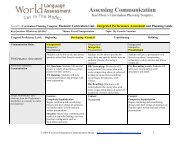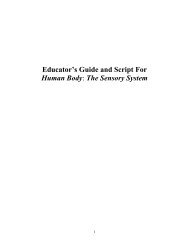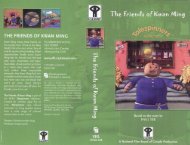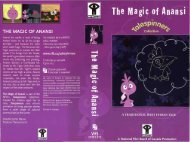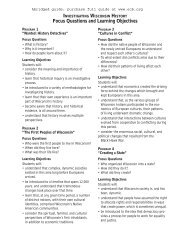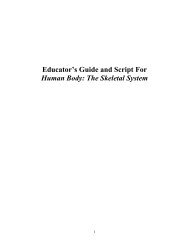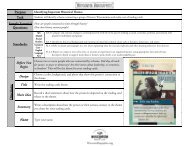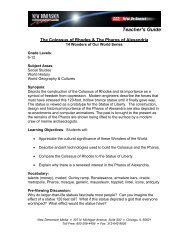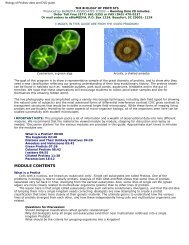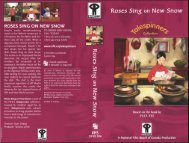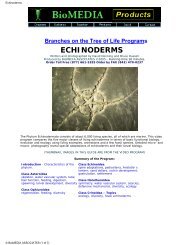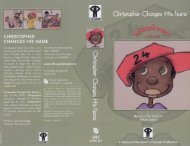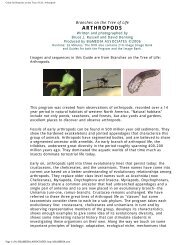Elements, Compounds, Mixtures
Elements, Compounds, Mixtures
Elements, Compounds, Mixtures
You also want an ePaper? Increase the reach of your titles
YUMPU automatically turns print PDFs into web optimized ePapers that Google loves.
<strong>Elements</strong>, <strong>Compounds</strong>, and <strong>Mixtures</strong><br />
Introducing the Video<br />
Before viewing the program, gather together examples of elements,<br />
compounds, and mixtures. Examples of elements which are easy to find include<br />
a piece of copper wire, or aluminum flashing. Examples of compounds might<br />
include water, salt, baking soda, or vinegar. Examples of mixtures might include<br />
milk, granite, salad dressing, or toothpaste. Place one or more examples of an<br />
element, compound, and mixture on a table in front of the class. Ask the class to<br />
describe and identify each substance.<br />
Next, tell the students that these substances are quite different from each<br />
other. Ask them how they think the substances are different from each other.<br />
Write their answers on the board. Explain to students that these materials can be<br />
categorized based on whether they are elements, compounds, or mixtures. Write<br />
the definition of each of these terms on the board. Now ask students to figure<br />
out which of the substances are elements, compounds, and mixtures. Ask them<br />
to explain their rationale for categorizing the substances. Explain to students<br />
that they use many different examples of elements, compounds, and mixtures<br />
everyday. Tell students to pay close attention to the program to learn more about<br />
the fascinating characteristics of elements, compounds, and mixtures.<br />
Video Viewing Suggestions<br />
The student master “Video Review” is provided for distribution to students. You<br />
may choose to have your students complete this master while viewing the program<br />
or to do so upon its conclusion.<br />
The program is approximately 20 minutes in length and includes a ten question<br />
video quiz. Answers are not provided to the Video Quiz on the video, but are<br />
included in this teacher’s guide. You may choose to grade student quizzes as an<br />
assessment tool or to review the answers in class.<br />
The video is content-rich with numerous vocabulary words. For this reason you<br />
may want to periodically stop the video to review and discuss new<br />
terminology and concepts.<br />
9<br />
www.visuallearningco.com<br />
1-800-453-8481<br />
Visual Learning Company



